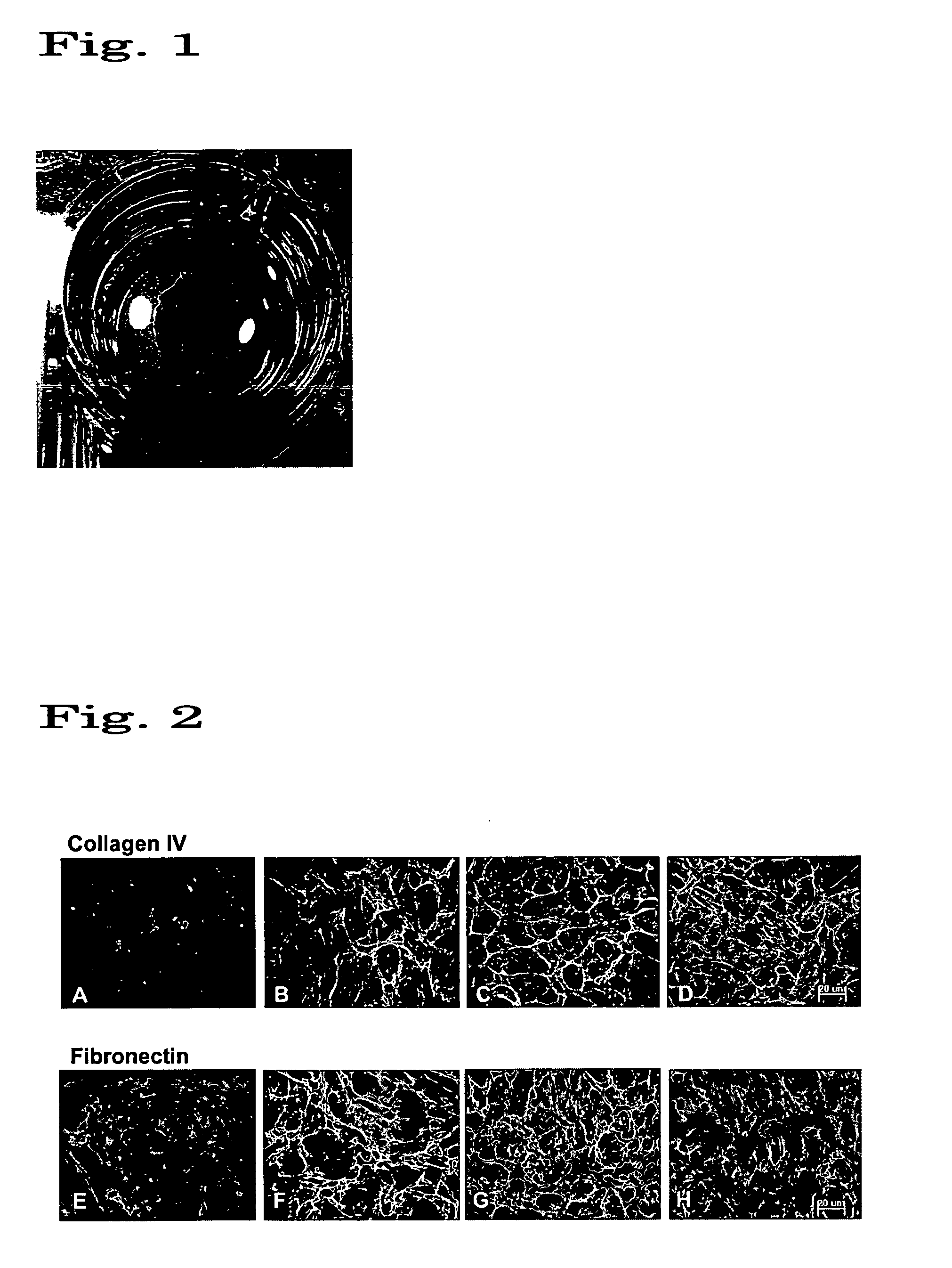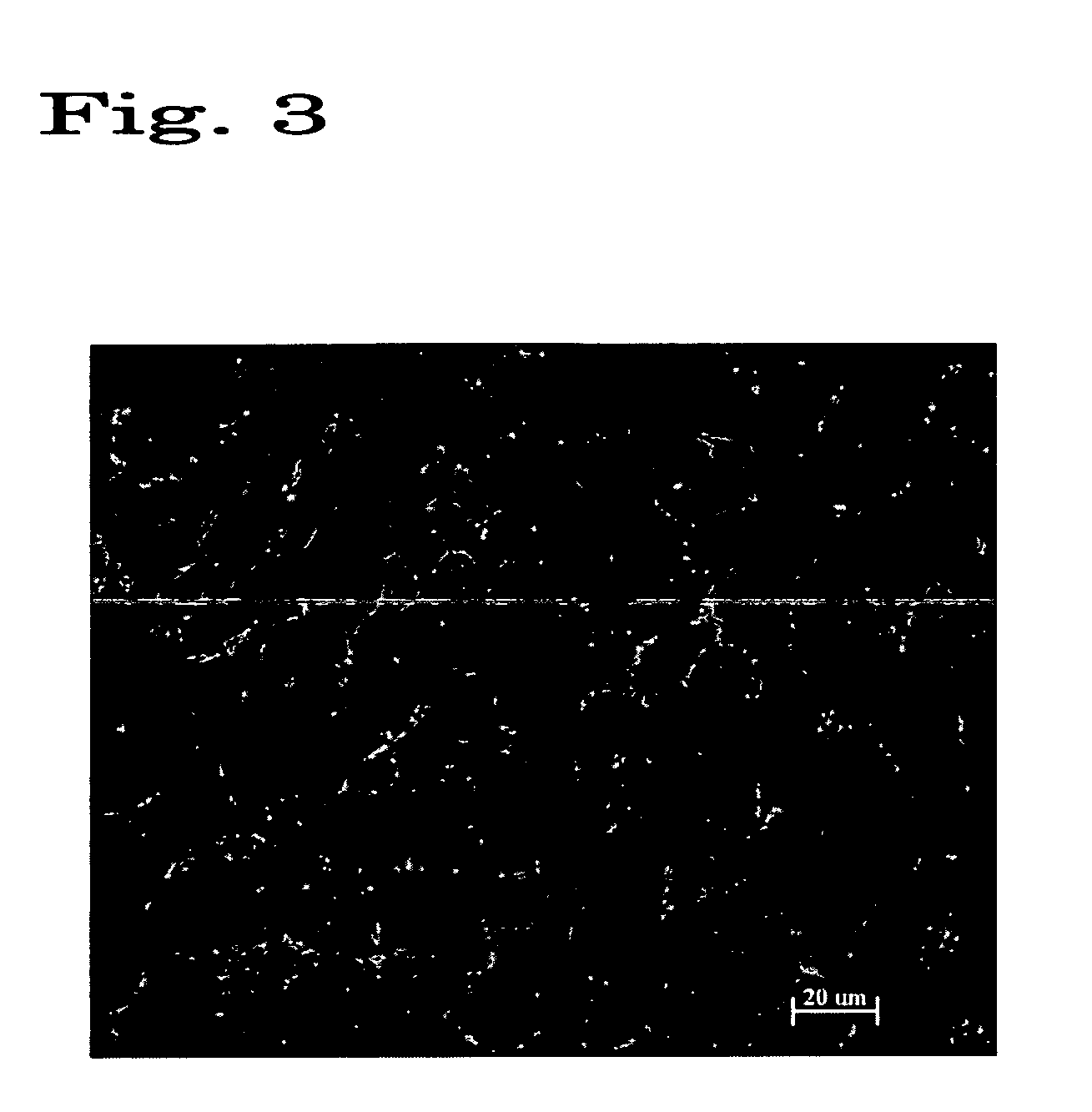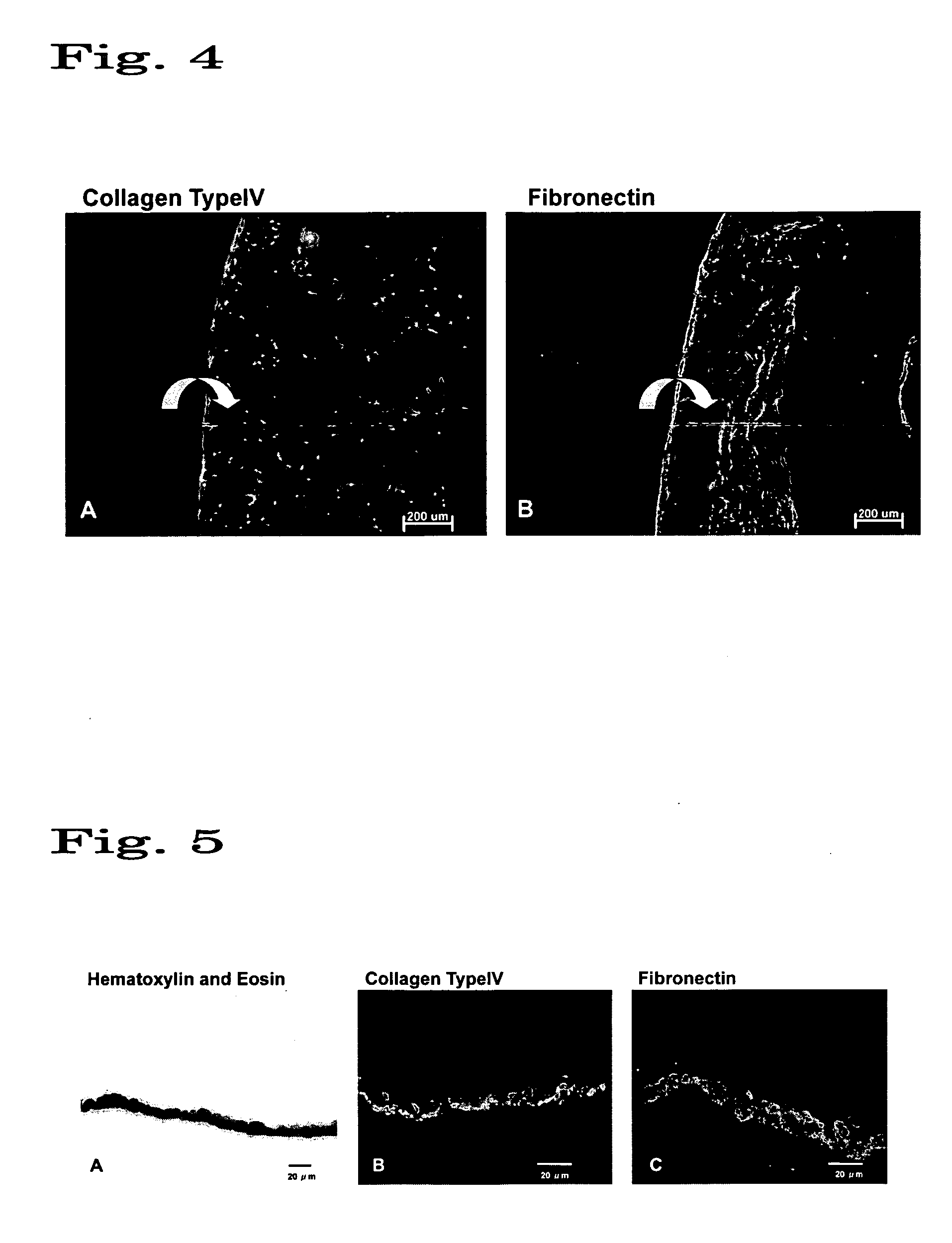Regenerated corneal endothelial cell sheets, processes for producing the same, and methods of using the same
a corneal endothelial cell and cell sheet technology, applied in the field of regenerated corneal endothelial cell sheets, can solve the problems of corneal tissue swelling, corneal tissue swelling, and the number of donors in japan is still considerably smaller
- Summary
- Abstract
- Description
- Claims
- Application Information
AI Technical Summary
Benefits of technology
Problems solved by technology
Method used
Image
Examples
examples
[0054] On the following pages, the present invention is described in greater detail by reference to examples which are by no means intended to limit the scope of the invention.
examples 1 and 2
[0055] To a commercial 3.5 cmφ cell culture dish (FALCON 3001 manufactured by Becton Dickinson Labware), a coating solution having N-isopropylacrylamide monomer dissolved in isopropyl alcohol to give a concentration of 40 wt % (Example 1) or 45 wt % (Example 2) was applied in a volume of 0.1 ml. By applying electron beams with an intensity of 0.25 MGy, an N-isopropylacrylamide polymer (PIPAAm) was immobilized on the surface of the culture dish. After the irradiation, the culture dish was washed with ion-exchanged water to remove the residual monomer and the PIPAAm that did not bind to the culture dish; the culture dish was then dried in a clean bench and sterilized with an ethylene oxide gas to provide a cell culture support material. The coverage of PIPAAm was found to be 1.6 μg / cm2 (Example 1) or 1.8 μg / cm2 (Example 2).
[0056] In a separate step, a corneal endothelial tissue was collected from the corneal limbus of a white rabbit under deep anesthesia by the usual method and the c...
example 3
[0060] A cell culture support material was prepared as in Example 1. Subsequently, a coating solution having an acrylamide monomer containing N,N-methylene bisacrylamide (1 wt % / acrylamide monomer) dissolved in isopropyl alcohol to give a concentration of 5 wt % was applied over the support material in a volume of 0.1 ml. A metallic mask having a diameter of 1.8 cm was superposed and while being kept in that state, the support material was exposed to electron beams with an intensity of 0.25 MGy, whereupon an acrylamide polymer (PAAm) was immobilized except in the area under the metallic mask. After the irradiation, the culture dish was washed with ion-exchanged water to remove the residual monomer and the PAAm that did not bind to the culture dish; the culture dish was then dried in a clean bench and sterilized with an ethylene oxide gas to provide a cell culture support material.
[0061] In the next step, by repeating the same procedure as Example 1, a corneal endothelial tissue was...
PUM
 Login to View More
Login to View More Abstract
Description
Claims
Application Information
 Login to View More
Login to View More - R&D
- Intellectual Property
- Life Sciences
- Materials
- Tech Scout
- Unparalleled Data Quality
- Higher Quality Content
- 60% Fewer Hallucinations
Browse by: Latest US Patents, China's latest patents, Technical Efficacy Thesaurus, Application Domain, Technology Topic, Popular Technical Reports.
© 2025 PatSnap. All rights reserved.Legal|Privacy policy|Modern Slavery Act Transparency Statement|Sitemap|About US| Contact US: help@patsnap.com



